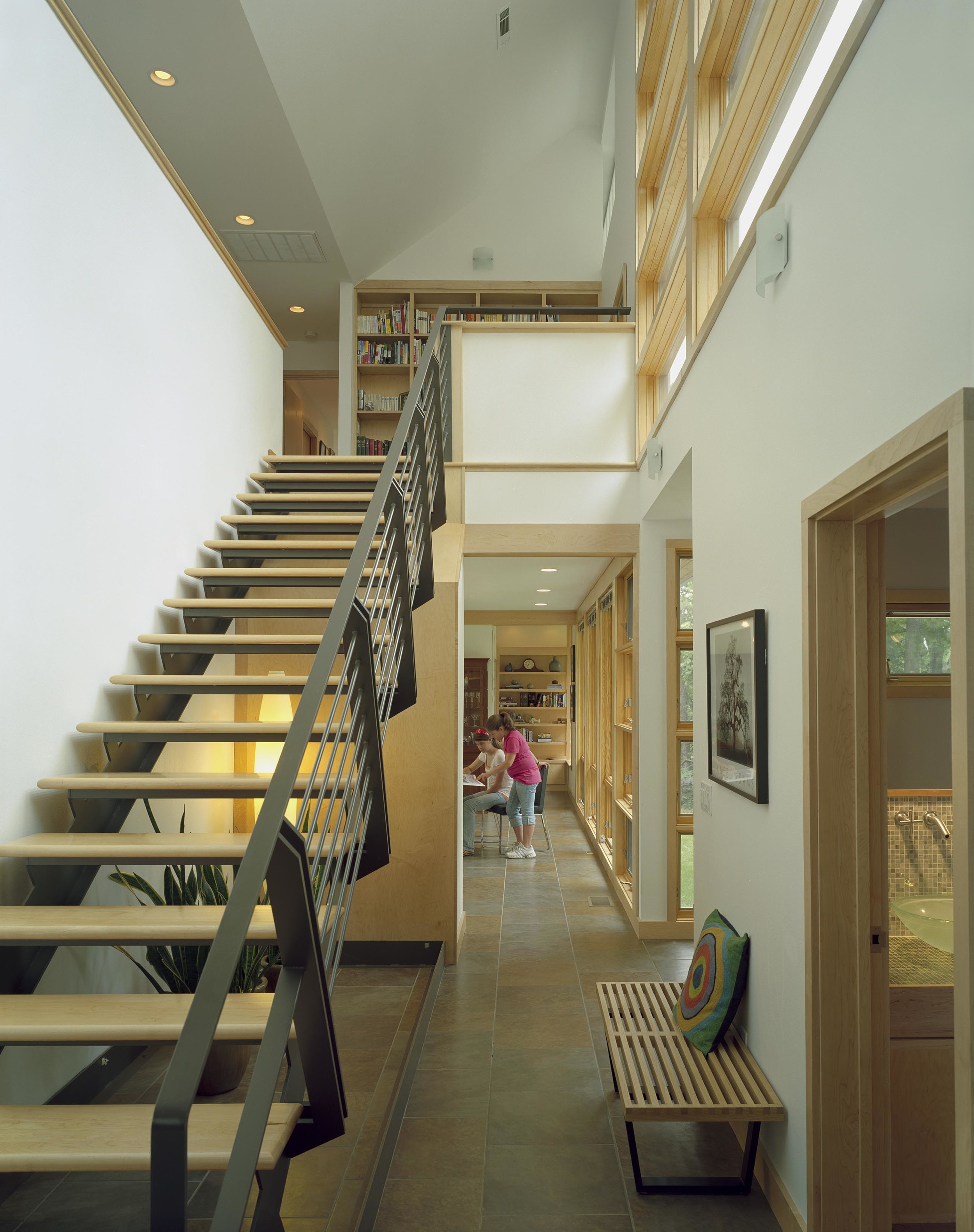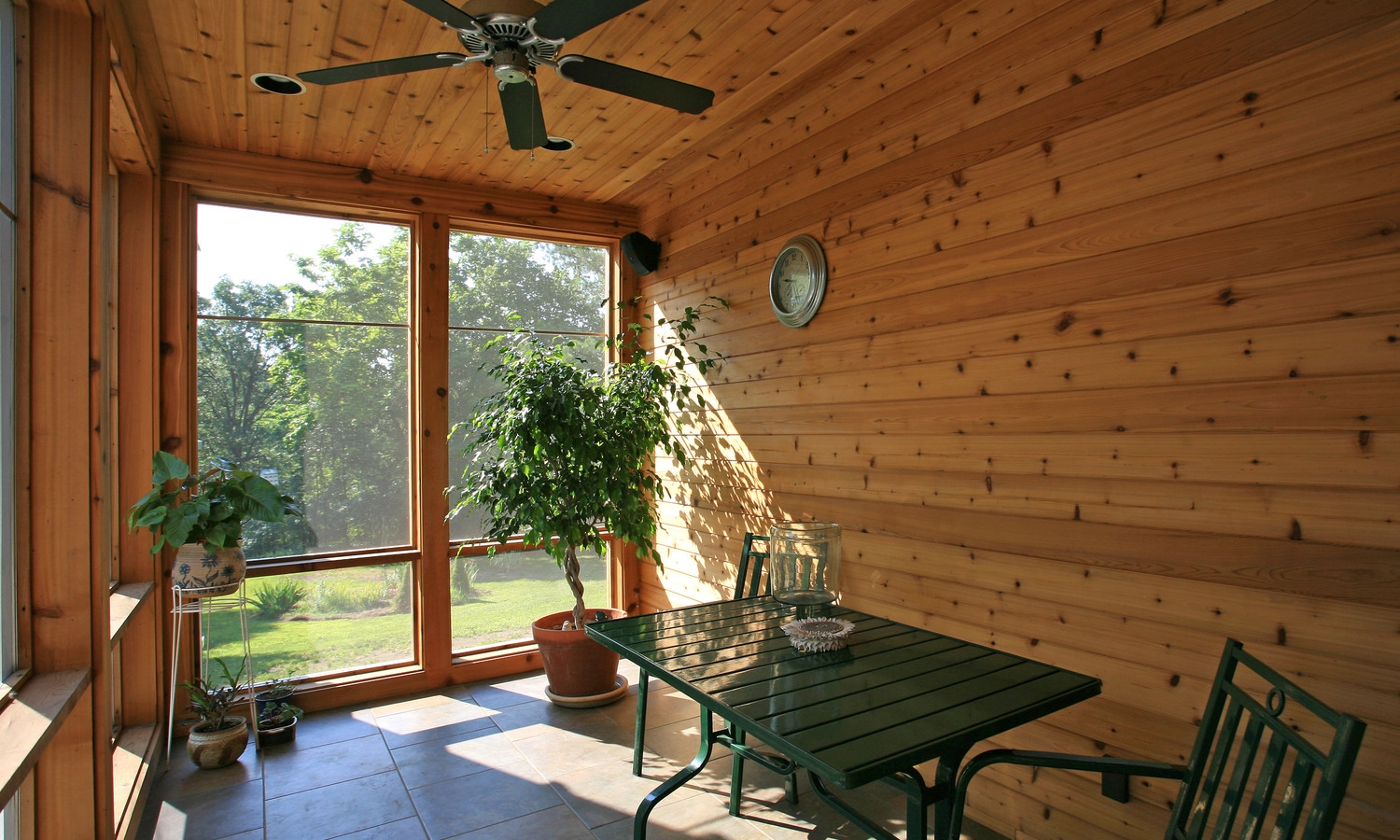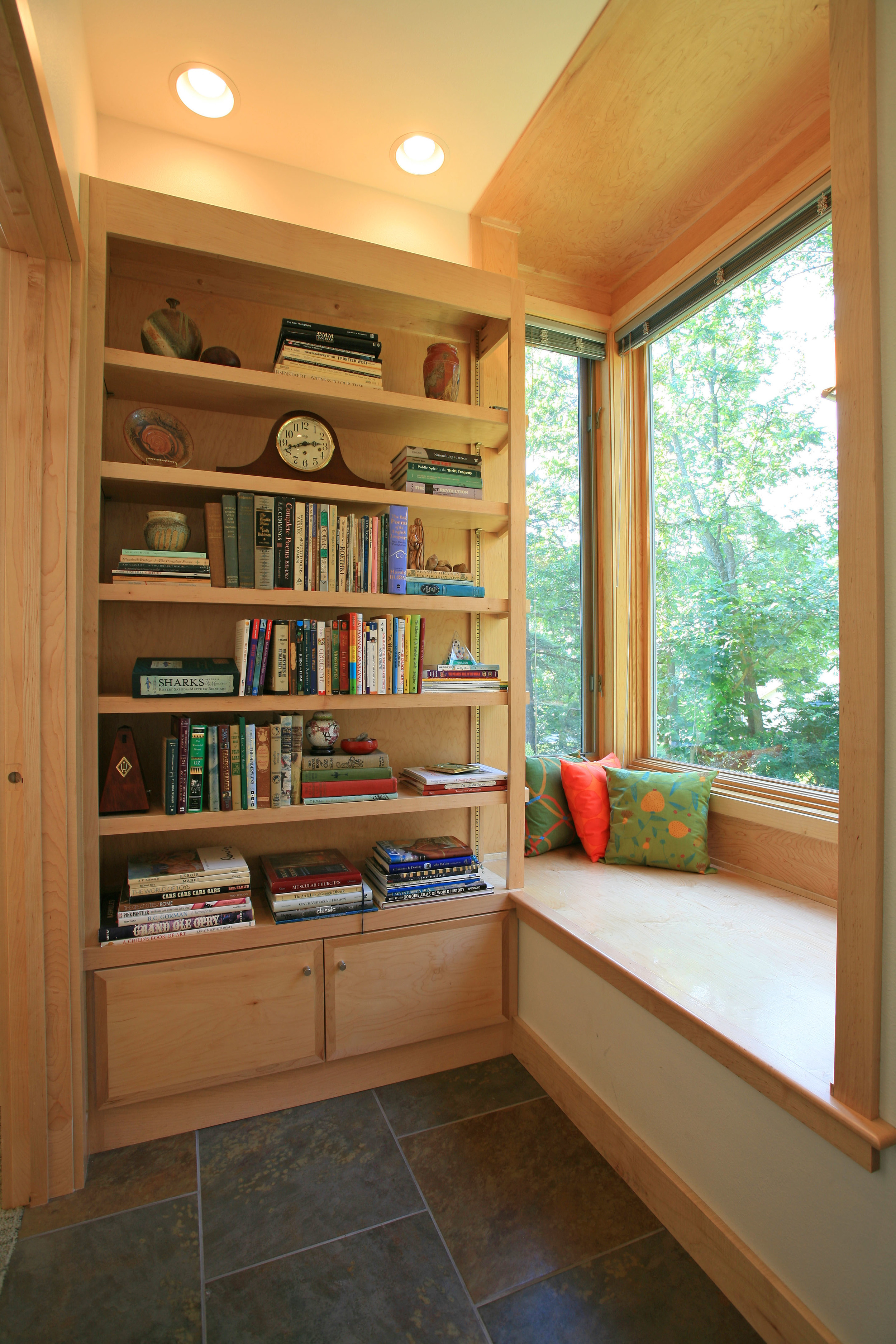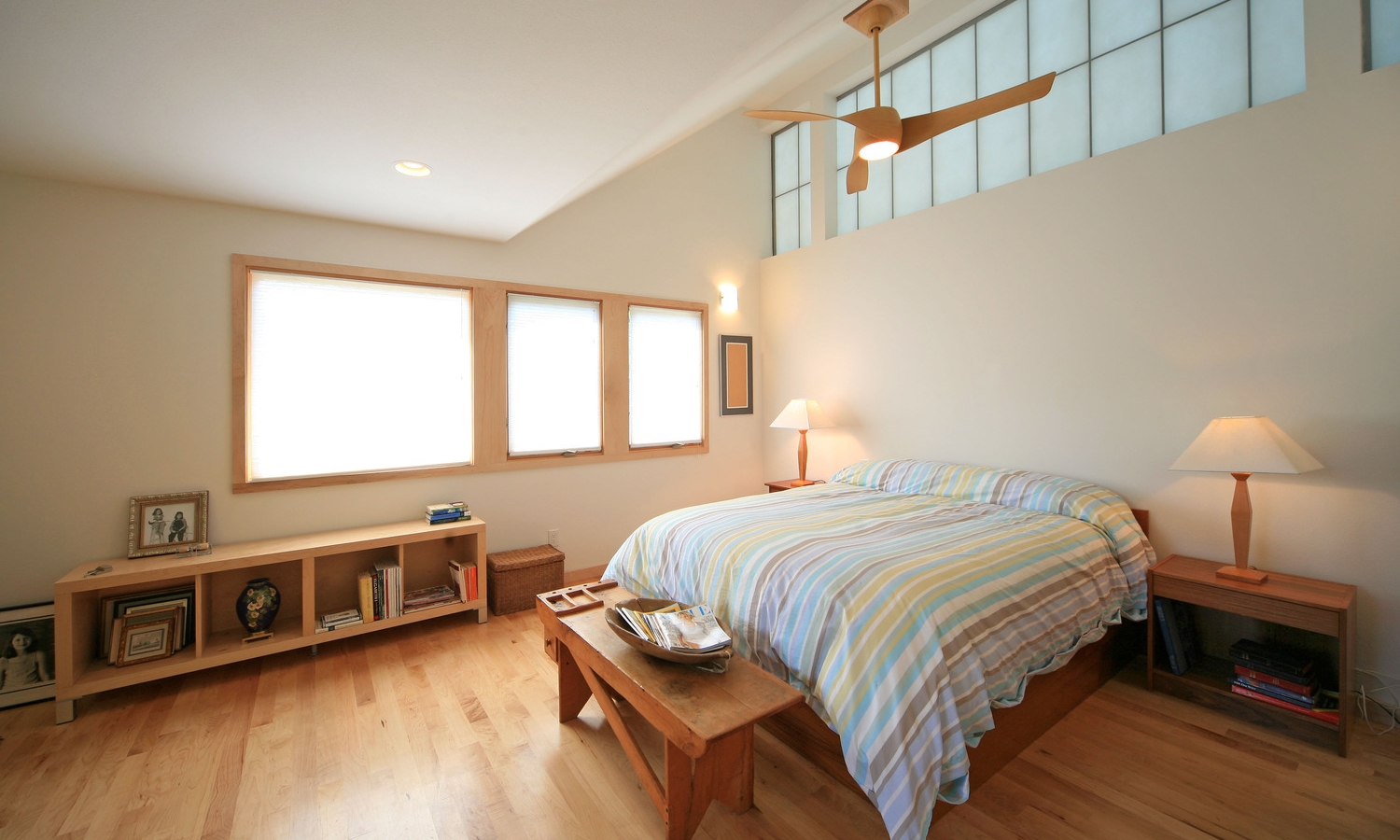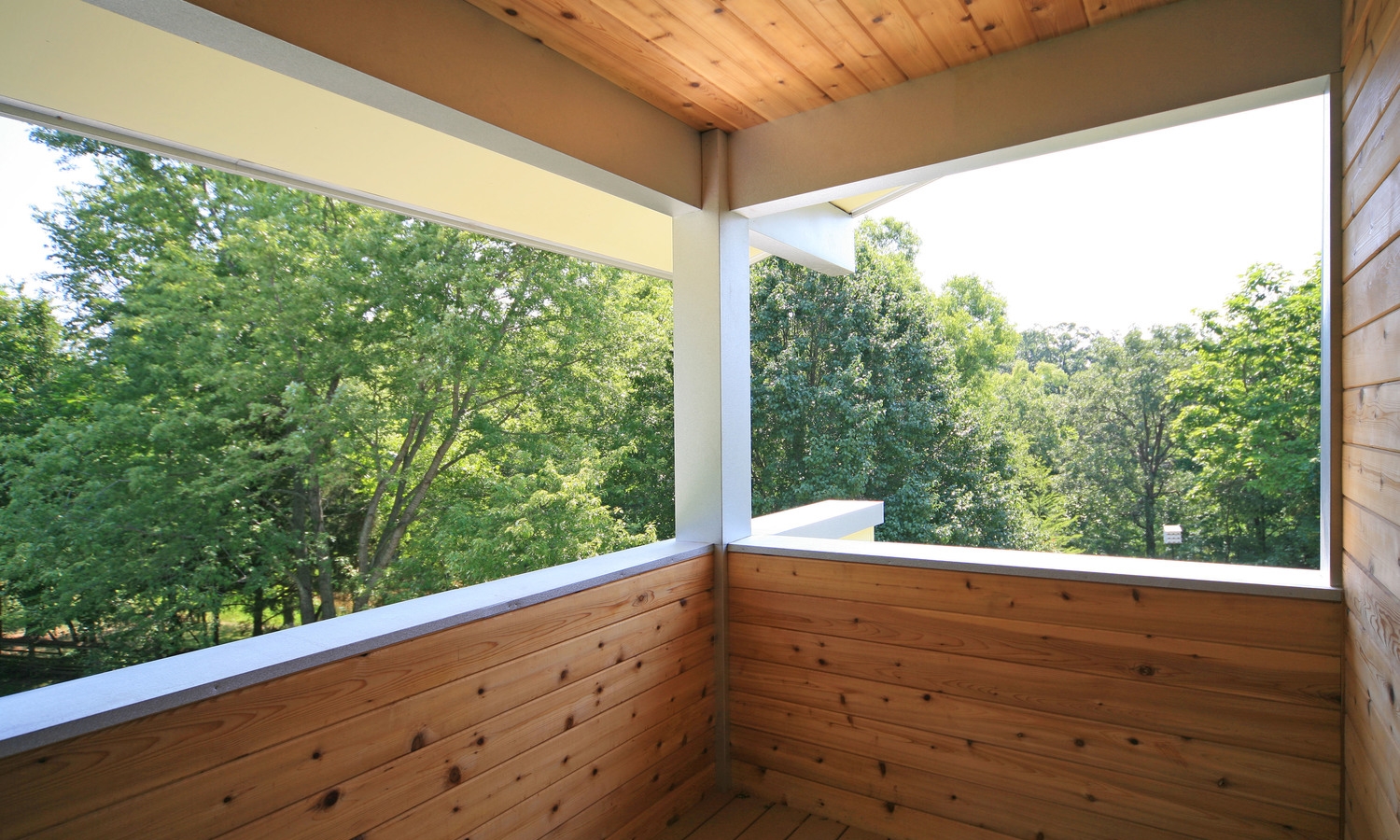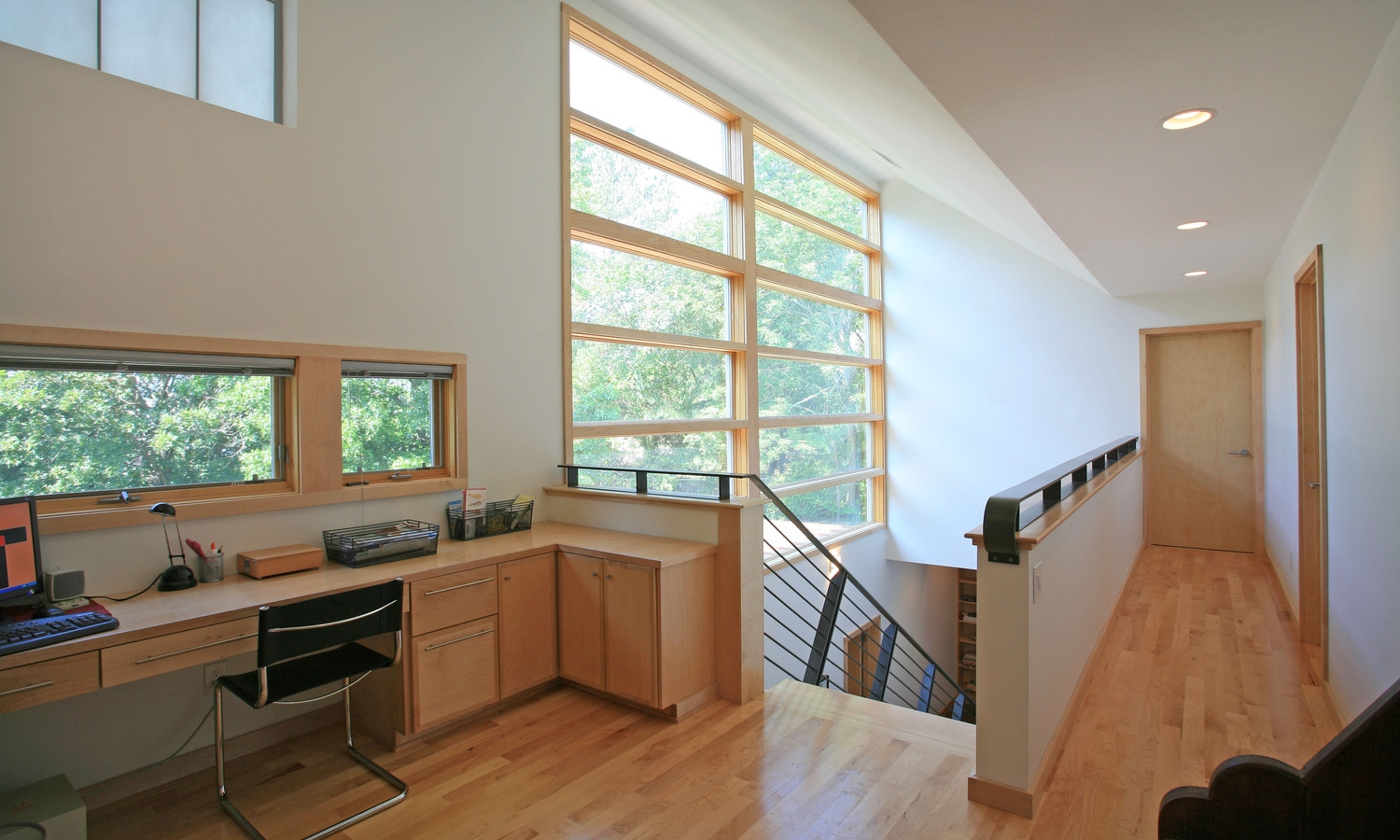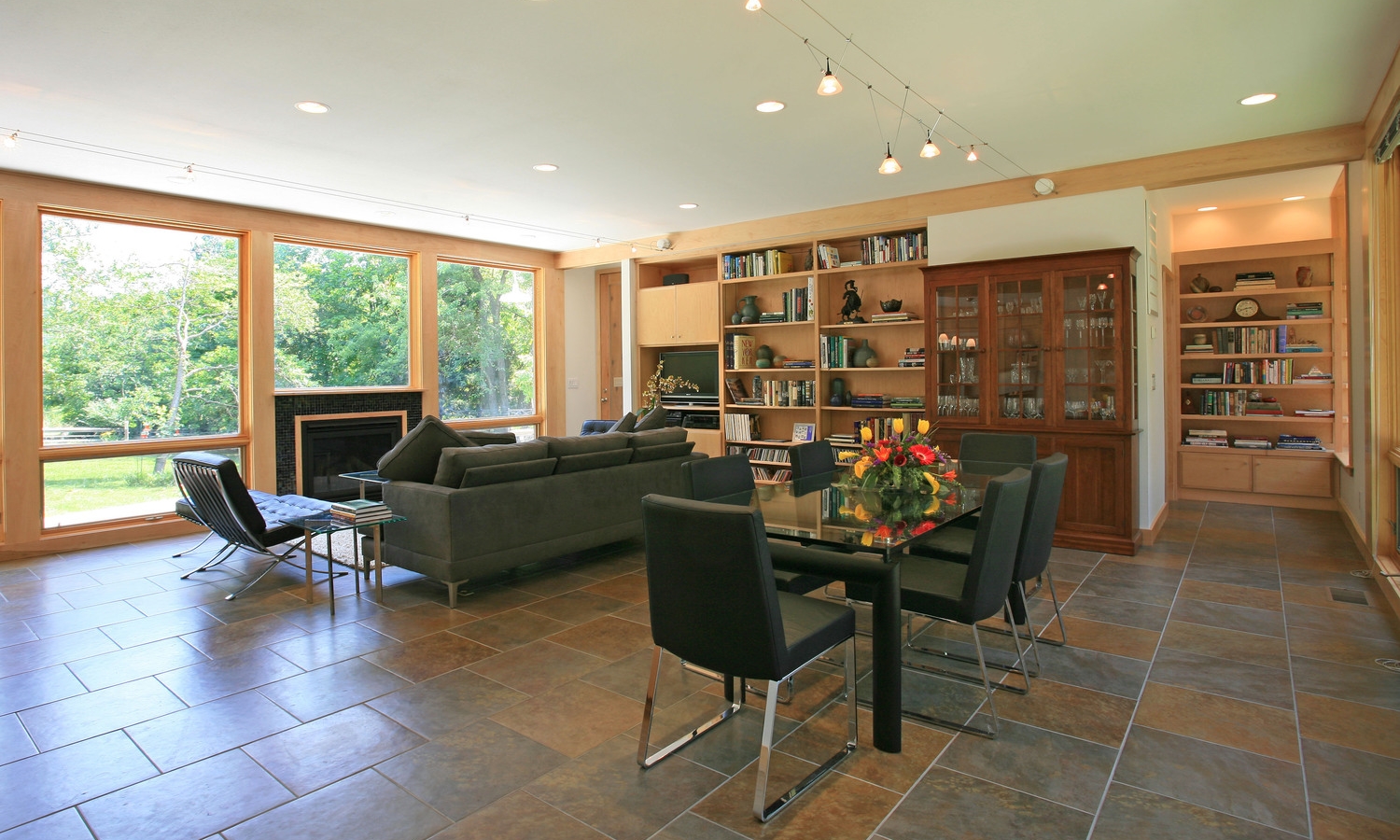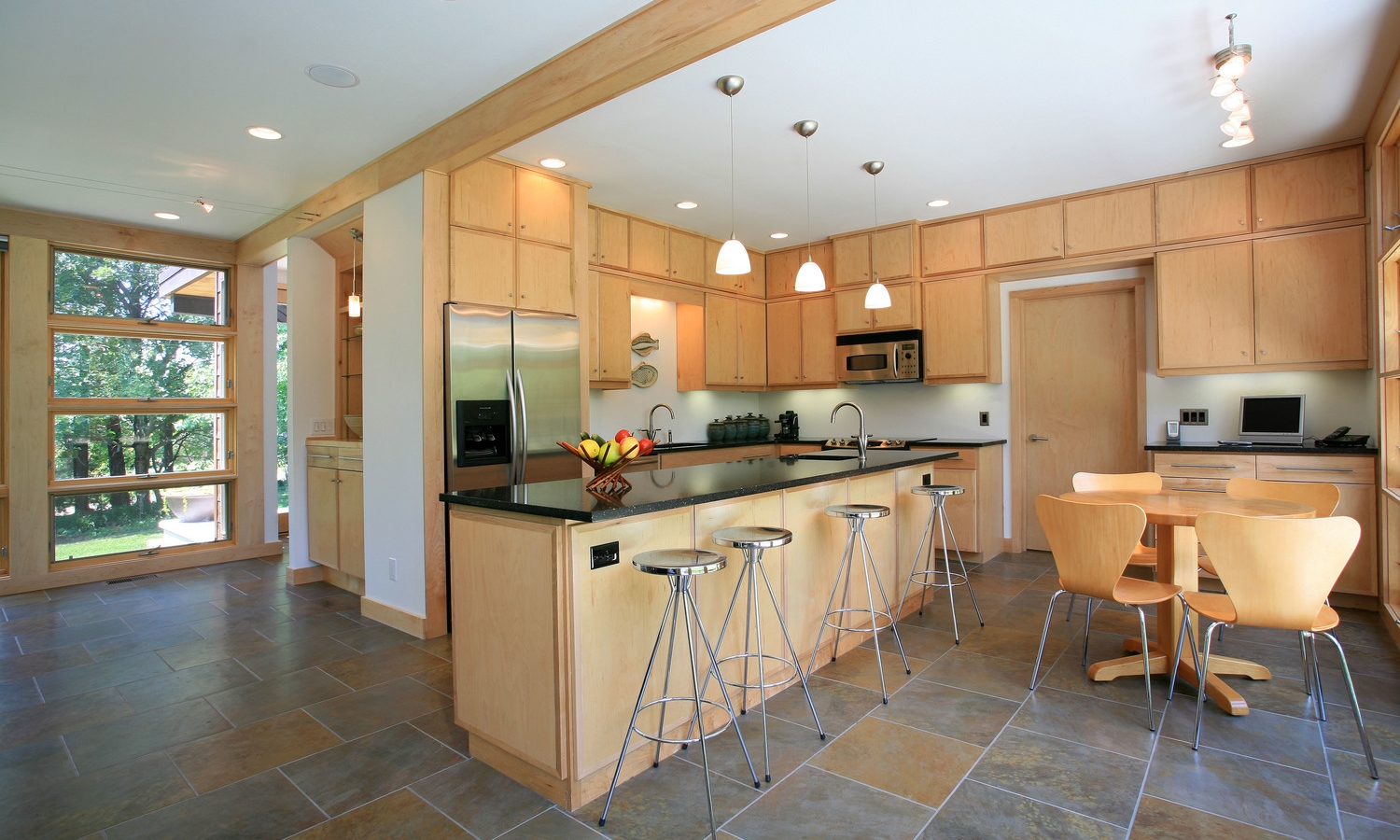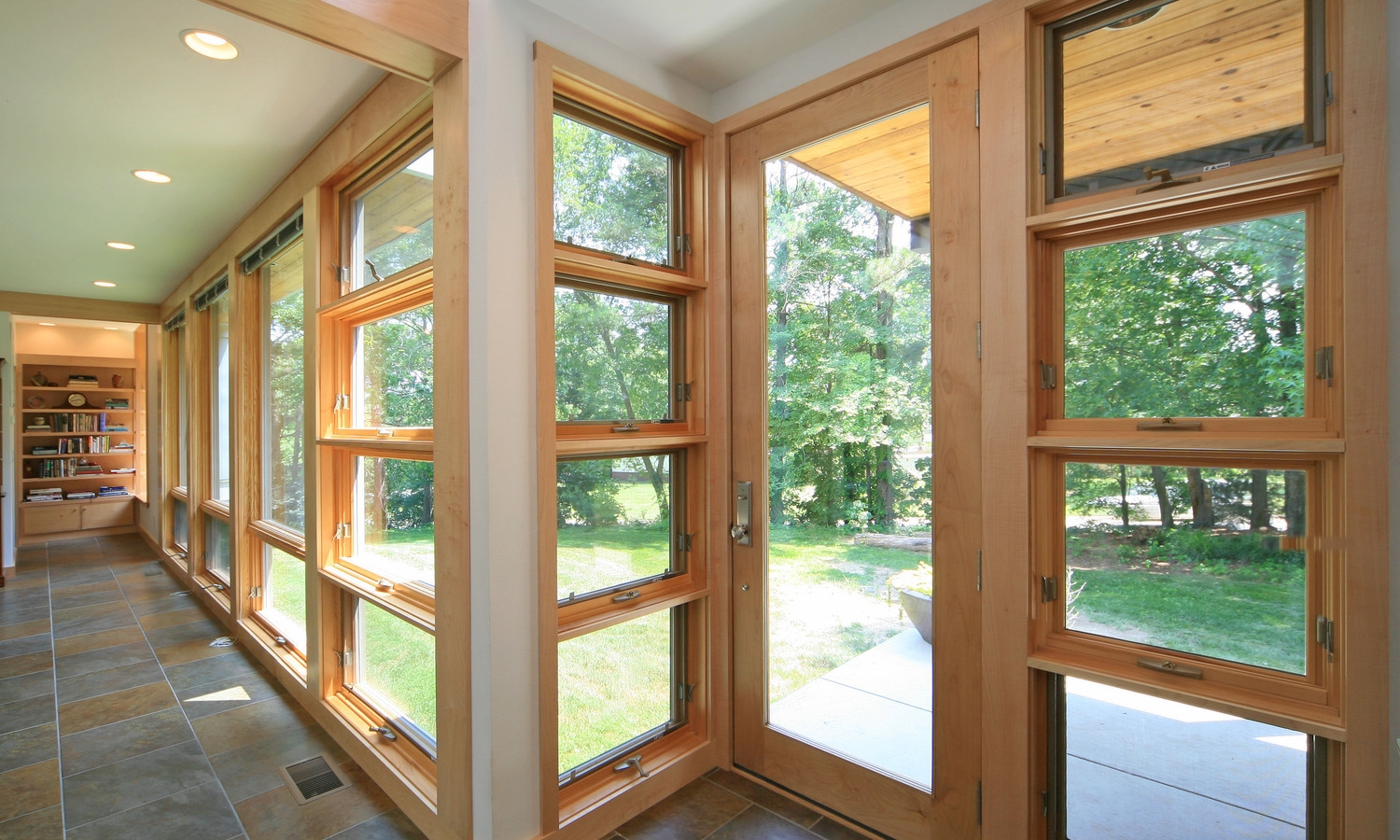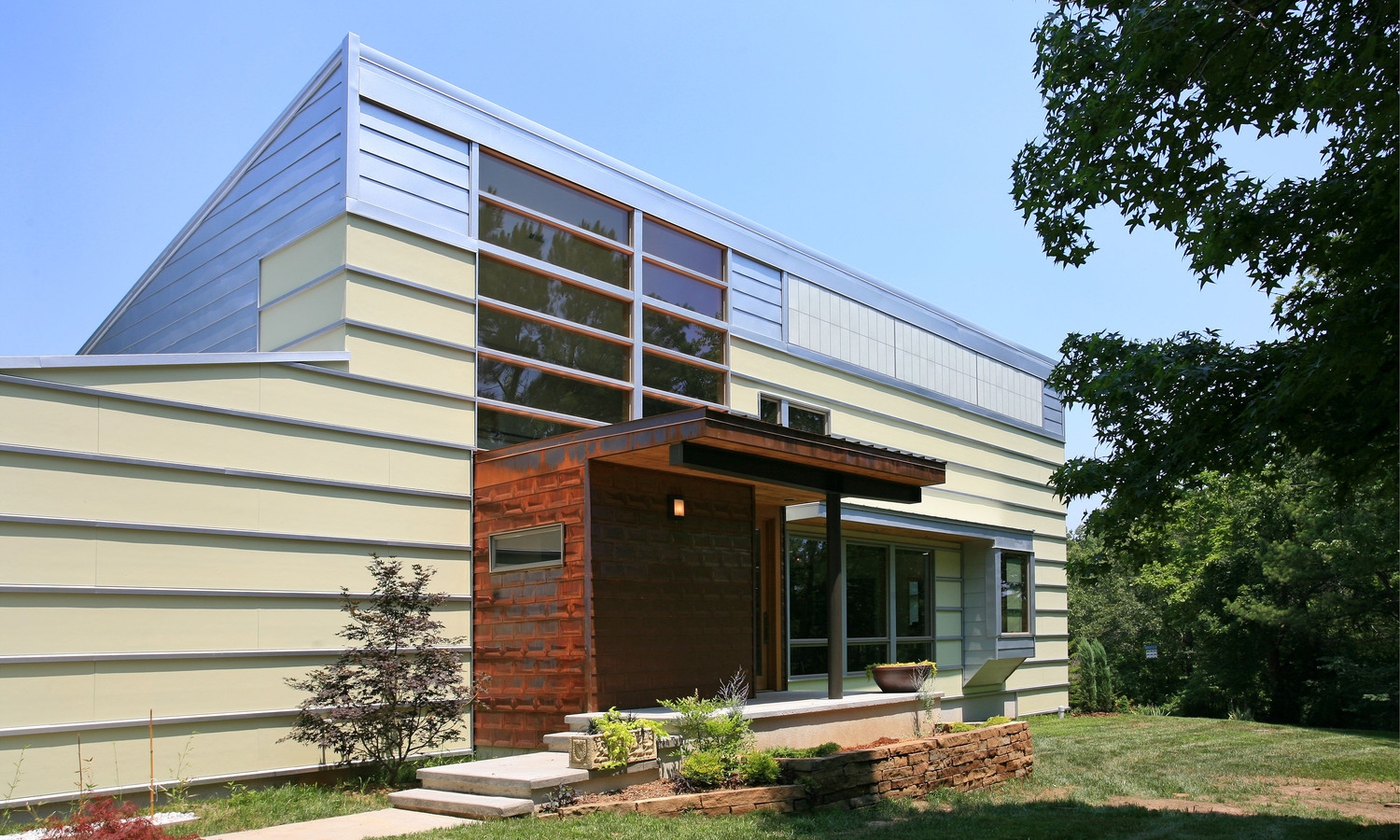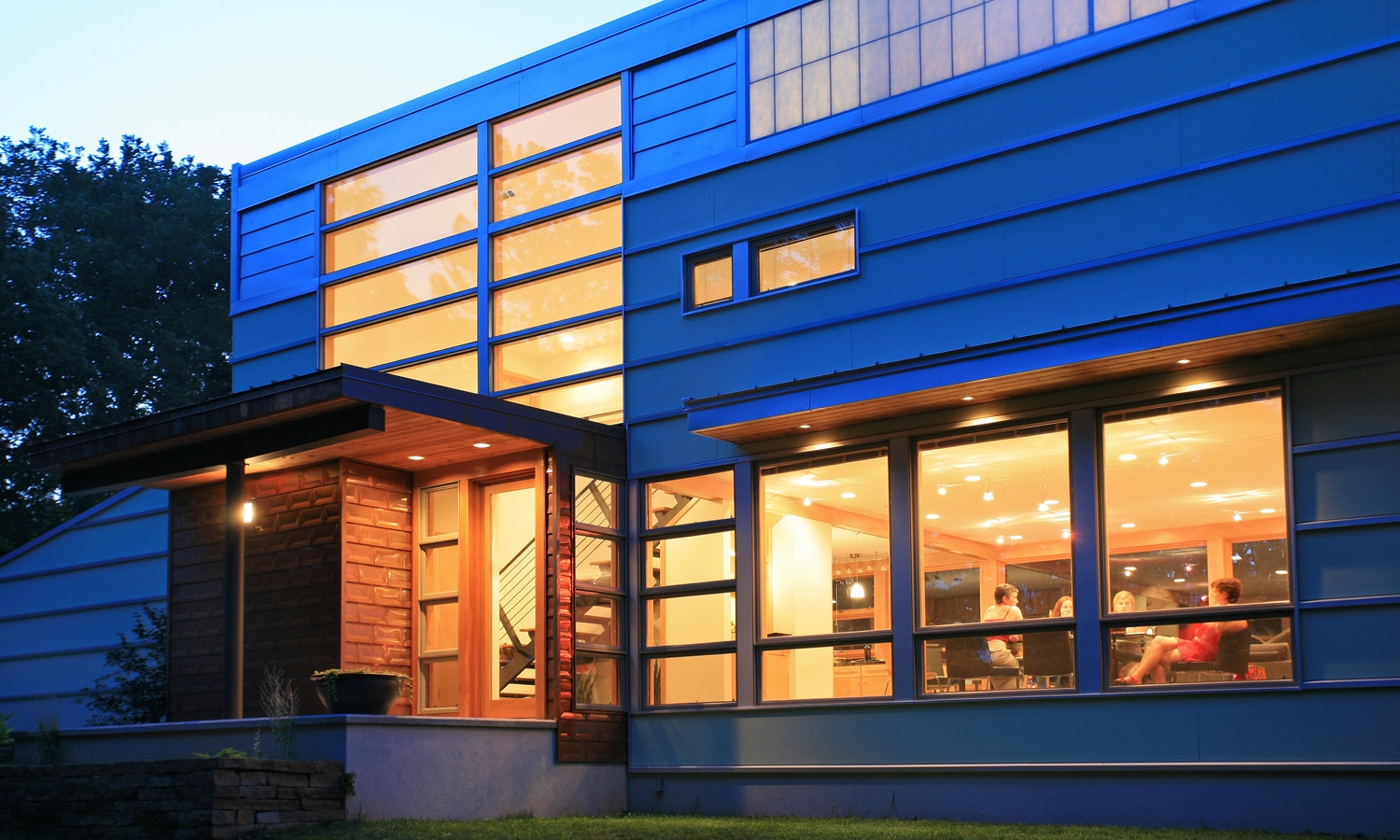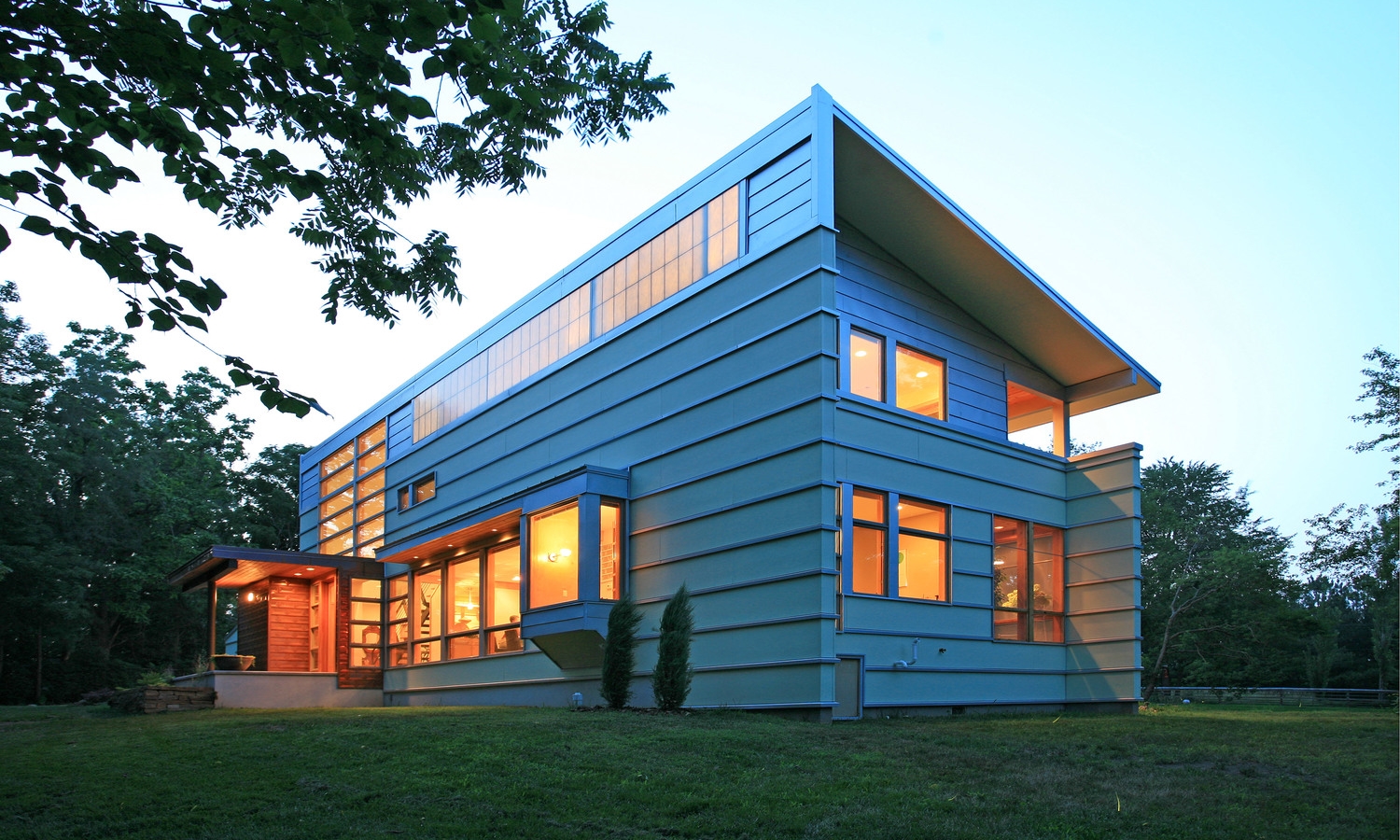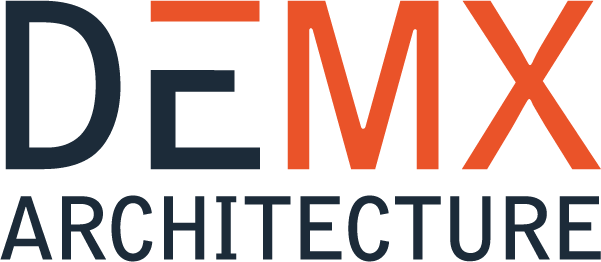Situated on a two-acre site at the edge of Fayetteville, this house for a family of four utilizes a 24' narrow plan and an inverted roof truss to maximize the penetration of natural light to all areas of the house. Parallel transparencies at the front and rear of the main living space, which includes the living, dining, and kitchen areas, extends the public realm to the bounding landscape along the south and north edges of the property. The primary form of the house emulates local vernacular examples, combining two simple sheds, one over the garage and another over the interior and exterior living spaces. The cladding system of the house, cementitious panels with horizontal galvanized metal battens, alludes to the board and batten systems employed in agricultural buildings of the area. A large south-facing light wall supports the inverted truss of the upper-shed roof and serves as background for the articulated copper entry porch and canopy. In the evenings this wall becomes a beacon, literally radiating internal activity, as registered by light, to the surrounding context. The large expanse of windows in the public spaces of the home allow lots of natural light to fill the spaces, also maximizing views to the exterior. In various spaces, deep earth tones are used in the floor tile as a contrast to the light stained wood flooring, trim, and millwork.
The house sits in contrast to the typical subdivision stock of 12:12 pitch hip roofs in the immediately adjacent subdivision. This antithesis parallels the dichotomies found in this rapidly growing corner of the state, where dignified utilitarian buildings sit in weathered opposition to the ersatz historicism and faux status of recent market-driven construction.
